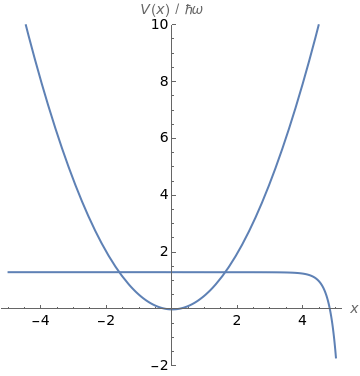Numerov Solutions for Single- and Double-Well Potentials
Numerov Solutions for Single- and Double-Well Potentials
In quantum mechanics, energy states of a one-particle system are given by solutions of the time-independent Schrödinger equation
-+V(x)ψ(x)=Eψ(x)
2
ℏ
2m
d
dx
where is the potential energy and is an energy eigenfunction. In principle, one can always find a which satisfies this equation, however, not all are valid solutions since the boundary conditions must also be satisfied. In fact, it is imposition of the boundary conditions on which gives rise to a discrete spectrum of energy states (for a bound system). In the examples here, we use the Numerov approach to generate solutions of the time-independent Schrödinger equation for bound systems. In the examples here, as , thus must vanish as becomes large. As shown here, only certain energies will give rise to solutions that satisfy this condition. The Numerov solution will always diverge as becomes large; however, by carefully adjusting the energy until it is very close to the exact eigenvalue, the point of divergence can be pushed to greater and greater values of .
V(x)
ψ(x)
ψ(x)
ψ(x)
ψ(x)
V(x)∞
x±∞
ψ(x)
|x|
x
x
In the first example, we consider a particle in a harmonic potential . With energy units such that , the exact energy eigenvalues are at =n+. Using the slider, one can scan the energy and find that at only for these discrete values will the computed solutions obey the boundary conditions.
V(x)=m/2
2
ω
2
x
ℏ=m=ω=1
E
n
1
2
In the second example, we consider the case of a particle in a double-well potential which has two states below the tunneling barrier. The slider is initially at the energy corresponding to the ground state. By carefully adjusting the slider, one can determine the energy of the first excited state, which shows a splitting of the energy levels due to tunneling.
